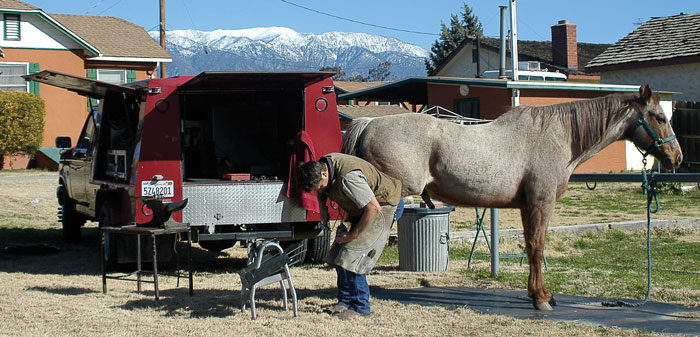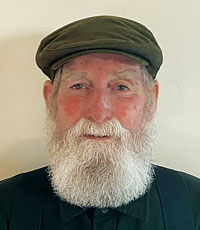The farrier business provides a broader range of working situations and income possibilities than just about any trade or business.
I was driving taxi in Boston in 1971 when a 10-minute conversation with a fellow cabbie changed my life. He was going to quit driving cab and learn to shoe horses. My profound ignorance was revealed when I replied that I figured they stopped doing that when they phased out the equine cavalry. He said his uncle had someone come around his farm regularly to shoe his horses. I wanted to be my own boss, and in my youthful enthusiasm I envisioned traveling around the country in an old pickup, shoeing horses as I went. I had no idea how the business worked. I didn’t realize that horse owners wanted to know the quality of work that farriers did, and whether you were going to be around when the horse came due again.
Once I was made aware of the realities of the business, my expectations of the future changed, just a bit. The head instructor at the farrier school at Rogue River Community College had shod Saddlebreds for years, so he was a wealth of information as to the realities of the business and the many avenues open to someone just getting started. I knew my education would continue for a while (I hadn’t a clue it would continue for the length of my career), but I had no idea where I wanted to land in the business.
It was 1973 and since I planned to stay in the Northwest, I was told the place to buy supplies was in Ellensburg, Wash. After finishing the class, I headed north. When the fellow handed me the bill for all the supplies he just loaded into my truck, I didn’t have enough money to buy the gas needed to get out of town. As things turned out, I never left.
Almost 50 years later, I am retired comfortably with 7 ½ acres and a nice house. Our daughter is established in her career, and my wife Linda and I are enjoying the time we prepared for so long ago.
I say this because most of my shoeing career was spent doing backyard horses. At numerous clinics and conventions, I have been part of or heard conversations in which the term backyard horses are said in a condescending manner or remarked upon as something you work through until you develop the skills and expertise to move up to the higher-level horses — where the real money is made. At some point, anyone in this business is faced with a choice about where they want to go with their practice. I discovered that I’m not a person who enjoys working under a lot of pressure. Even resetting a shoe within a time constraint during a horse show was more pressure than I wanted to deal with.
It was a conscious decision to stay with the business I could develop within a 50-mile radius of where I lived. I wanted to be home every night, have weekends off, and take family vacations. When we adopted our daughter, reading to her every night was something I did not want to miss. Shoeing the horses that the local economy provided limited the income I could expect to make; however, I always made sure I was earning enough to contribute my share to keeping our household going, while setting some aside for the day when I couldn’t or decided I didn’t want to continue shoeing.
Regardless of their use or breeding, I have always approached any horse I was working on as deserving of the same level of knowledge and expertise that the top show horses get. While I was not working on the million-dollar horses, those backyard horses were an important part of my clients’ families, and my efforts were appreciated as such.
To be at the top of the pay scale in my area, and since I wanted to be respected as a professional, I found the following to be most helpful:
- Attend every clinic or learning opportunity you can, and ride with those more experienced than you when possible.
- After attending these events, pass along new information or products to your clients and any vets you work with. This lets them know you are trying to increase your knowledge and skills, and therefore, providing better care for their horses.
- Keep your shoeing rig clean and well organized, and dress in a manner that any vet will want you working on their client’s horses.
- Be sure to set aside some money for the future. This might mean giving up some things in the present, but you will thank yourself in that future.
- And finally, if you are lucky enough to have a partner or spouse helping to make the business run, and helping with the finances, thank them regularly, we couldn’t do it without them.









Post a comment
Report Abusive Comment